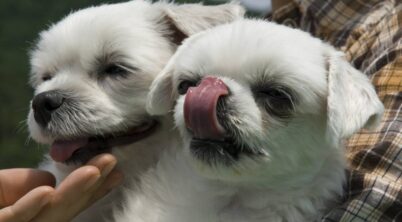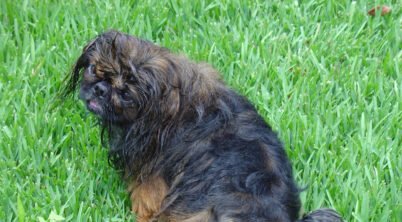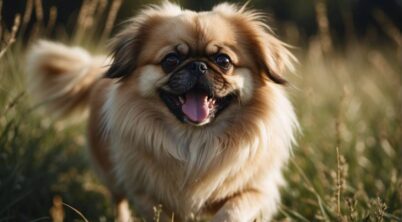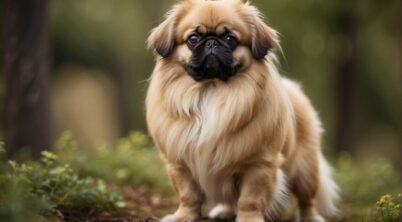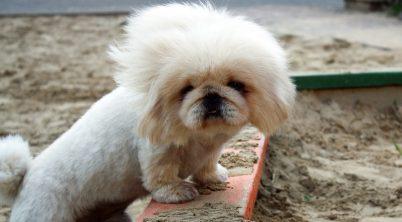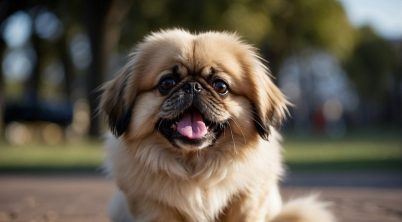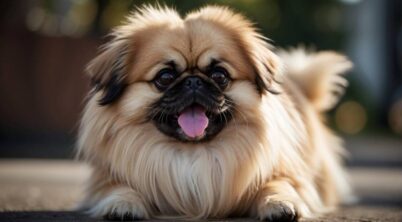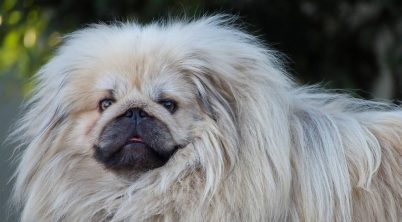The Pekingese is an ancient dog breed that holds a venerable position in canine history. Originating from China, its lineage is revered and dates back to the imperial courts where this breed was created to serve as companions for royalty. These small dogs are characterized by their lion-like mane and distinct rolling gait, reflective of a breed steeped in tradition and dignity. Over the centuries, the Pekingese has maintained much of its regal bearing and physical characteristics, and today, they remain a popular choice for those seeking a dog with a rich heritage and strong personality.
Understanding the lifespan of a Pekingese is vital for prospective and current owners. In general, this breed has an average lifespan of 11.4 to 15 years. Genetic factors, healthcare, and environmental conditions play significant roles in the longevity of these dogs. Although they are classified as a toy breed, their needs for healthcare and proper management are as complex and essential as larger breeds. Monitoring for common health issues such as neurological and cardiovascular concerns, particularly congestive heart failure, is a crucial aspect of their care.
A Pekingese’s age in human years has often been a topic of interest for dog enthusiasts. The conversion methodology has evolved over time, moving away from the simplistic one dog year equals seven human years formula. It is now recognized that dogs age at varying rates across different stages of their lives, with smaller breeds like the Pekingese generally living longer than larger ones. This nuanced understanding of aging helps owners better anticipate the care and attention their Pekingese will need through each phase of its life.
Table of Contents
Pekingese Years
The Pekingese, a breed with ancient roots in China, has a lifespan that can be intriguing when compared to human years. This small yet dignified dog was once the beloved companion of the imperial family in Beijing, symbolizing the grandeur of the Chinese court.
Historical Connection
- Origin: China, particularly in the Beijing region
- Ancient Indoctrination: Associated with the imperial family, regarded as a symbol of regality.
- Notable Event: British troops looted the Old Summer Palace during the Second Opium War, where these dogs were discovered.
Breed’s Historical Significance
- Lion Dog: Resembling Chinese guardian lions, they were named “lion dog.”
- Shih Tzu Relationship: Closely related to another royal breed, the Shih Tzu.
- Western Introduction: Queen Victoria received one named “Looty” after the British invasion.
Breed Longevity
Pekingese dogs typically live between 13 to 15 years, a respectable longevity for small breeds.
Life Expectancy Table:
| Age of Pekingese | Equivalent Human Age |
|---|---|
| 1 year | 15 human years |
| 2 years | 24 human years |
| 5 years | 36 human years |
| 10 years | 56 human years |
| 15 years | 76 human years |
This calculation is often based on a formula that adjusts the common misconception that one dog year equates to seven human years.
Responsible for the Breed’s Care
Owners should be aware of specific health concerns, such as neurological and cardiovascular conditions, that could influence the Pekingese’s quality of life and longevity. Ensuring regular check-ups, a balanced diet, and adequate exercise is pivotal in promoting a healthy lifespan for these cherished dogs.
Pekingese Lifespan
The Pekingese, a toy breed characterized by its luxurious double coat and dignified demeanor, typically enjoys a lifespan of 12 to 15 years. This small breed, often found in colors such as tan, red, white, golden, sable, cream, and black, is known for its longevity compared to larger breeds.
These dogs, originated as sleeve dogs in ancient China, exhibit a distinctive rolling gait. Despite their aristocratic appearance, Pekingese are known to be quite affectionate and make excellent companion dogs. Their independent nature means they can enjoy periods of play independently but they also cherish being close to their owners and receiving attention.
Caring for a Pekingese’s coat is essential; their double coat requires regular grooming to maintain their health and appearance. This breed can be predisposed to certain health conditions, which can impact their overall lifespan. Therefore, it’s crucial for owners to prioritize regular veterinary check-ups and maintain a healthy lifestyle for their pets.
In summary, with proper care, regular play, and affection, the Pekingese can be a long-lived companion, bringing joy for many years.
Pekingese in Culture through the Years
The Pekingese breed has a storied past deeply intertwined with Chinese culture, harking back to ancient times. Regal origins: Seen as the living embodiment of the sacred lion in Buddhism, the Pekingese were revered by Chinese emperors and synonymous with the imperial family. Only those of noble blood were permitted to own one, making the breed a symbol of wealth and status.
Imperial presence: Throughout history, these dogs graced the ornate palaces, enchanting onlookers with their dignified demeanor. Their likeness was often depicted in art and literature, signifying royalty and divine protection.
- Regal favor: During the Tang and Song dynasties, Pekingese enjoyed elevated status as palace dogs.
- European introduction: It was not until the Opium Wars of the 19th century that Europeans came to know the Pekingese, following their acquisition by British and French troops.
Cultural transformation: Over the years, the perception of Pekingese shifted. They transitioned from the exclusive companions of emperors to beloved pets recognized worldwide. This change mirrored broader cultural and societal shifts as China interacted more with other nations.
Modern representation: Today’s Pekingese maintain their air of nobility. For audiences across the globe, they represent a living link to an ancient, regal epoch, continuing to be prominent figures in dog shows and companions in homes. Their historical significance ensures that they are not just pets but a cultural legacy preserved through the centuries.
Ownership Advice
When considering a Pekingese as a pet, prospective owners should recognize that this breed is recognized by the American Kennel Club (AKC) as a member of the toy group, valued for its companionship qualities. They are purebred dogs with distinct personality traits; their behavior exhibits a combination of charm, intelligence, and self-importance.
Socialization and consistent training are key for Pekingese puppies. Early exposure to various people, sights, and situations will help the Pekingese develop into a well-rounded dog. Despite their small size, they possess a strong watchdog instinct, so training should also include teaching them when to bark and when to be quiet.
They are well-suited for apartment living due to their size, but they still require daily walks and playtime to remain happy and healthy. While they can be good companions for older children who understand how to interact with them, their temperament may not be tolerant of younger, more energetic kids.
Here are some succinct tips for future owners:
- Exercise Needs: Moderate; short walks and play sessions.
- Grooming: Frequent; their luxurious coat requires regular brushing.
- Health: Schedule regular check-ups with a local vet.
- Nutrition: Feed them high-quality diet appropriate for their age.
Pekingese were once known as “sleeve dogs,” as they could be carried in the large sleeves of the Chinese imperial family’s garments. They might enjoy being a lap dog, but they also appreciate moments of independence.
Remember to give them ample attention and affection; they thrive on being involved in the family’s activities. Lastly, socialize them well to ensure their watchdog tendency doesn’t lead to excessive shyness or aggression.

